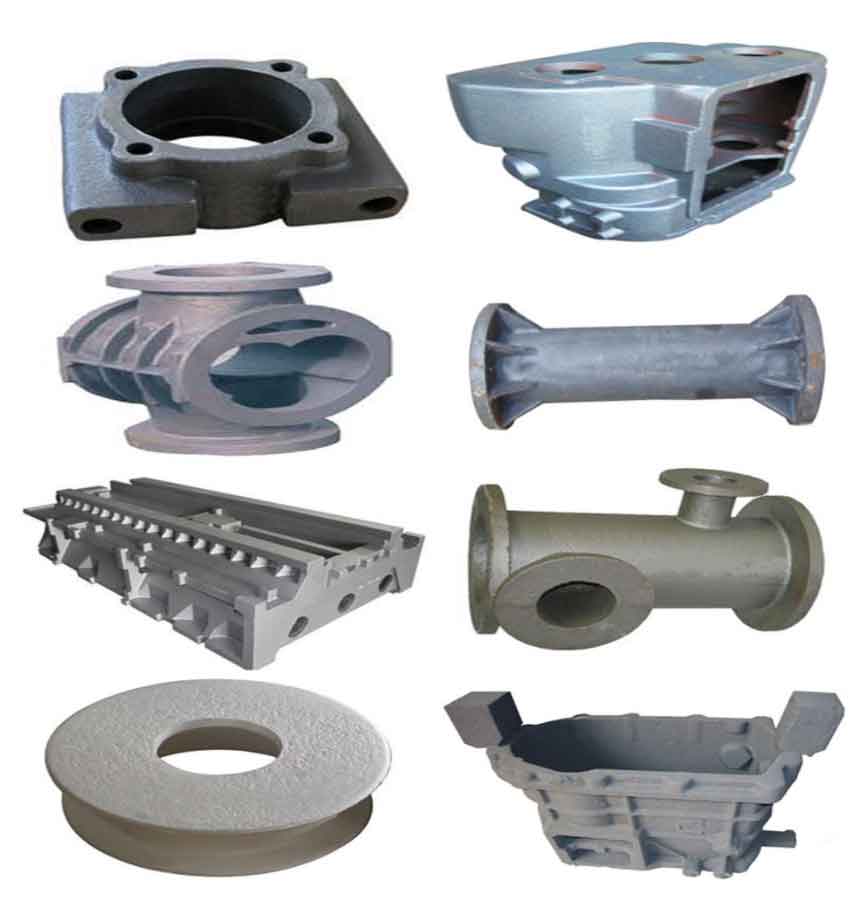For the surface of gray cast iron treated by laser alloying, the microstructures of different mixed alloy powders are obviously different: when the alloy powder is wc+fe, no obvious unmelted particles are found in the high temperature zone, w element is distributed along the austenite crystal in a grid shape, and forms (Fe, w) XCY eutectic carbide with Fe3C. In the medium temperature zone, a large number of unmelted particles are dispersed and distributed at the interface of austenite crystal; When the alloy powder is Wc+Cr+Fe, no obvious unmelted large particles are also found in the high temperature zone. W elements are distributed on the carbide skeleton in a grid shape, while CR elements are distributed on and between the carbide skeleton. In addition, Cr and crxcy small particles are formed between the carbide meshes, and a large number of solid particles are also dispersed in the medium temperature zone, and a large number of solid small particles are also found between the carbide meshes; When the alloy powder is fe+cr, the structure formed is cellular structure. No obvious unmelted particles are found in the high temperature zone and the medium temperature zone. The distribution of Cr is irregular, but mainly distributed on the austenite crystal. For the strengthening mechanism of different alloy elements, the following conclusions are given: the existence of W element can strengthen the grain boundary, and some unmelted particles in the middle temperature region can well connect different crystals; Cr element can strengthen both crystal and grain boundary.

The toughness and tensile strength of gray cast iron can be effectively improved by laser treatment through tensile samples. The crack propagation is a mixed mode of intergranular and transgranular propagation; In addition, when wc+cr+fe alloy powder is laser alloyed, gray cast iron has the highest tensile strength, because w element further strengthens the grain boundary on the basis of Cr Element strengthening the crystal and grain boundary at the same time.
Comparing the wear results of different samples, it is found that laser alloying wc+cr+fe alloy powder can most effectively improve the fatigue wear resistance of gray cast iron surface. Compared with the untreated samples, the fatigue defects of gray cast iron on the treated samples (matrix and unit body) are obviously slight.
The formation of surface delamination in the untreated area can be divided into two types: one is the formation of adhesion to graphite, and the other is the formation of crack propagation at the graphite tip. Comparing the surface delamination phenomenon on the unit body and the substrate, there are a large number of cracks around the surface delamination on the substrate surface, which expands the surface delamination area, and there are no residual cracks around the surface delamination formed in the unit body area. With the appearance of the surface delamination, it marks the termination of the surface delamination induced by the crack.
The fatigue crack of gray cast iron deflects frequently on the element body, and the defect edge formed is serrated, while the defect edge on the matrix is relatively smooth. Because the deflection of fatigue crack propagation path of gray cast iron will consume more crack driving energy, the fatigue life will be improved. According to the different strengthening mechanism of different elements, different elements will also show different fatigue life.
